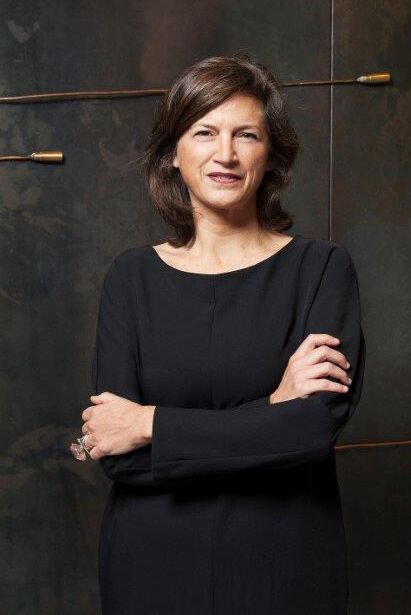Eberhard Havekost *

(born Dresden in 1967)
‘Blau’, 1998, titled, signed and dated Havekost M98 on the reverse, oil on canvas, 200 x 140 cm, (PP)
Provenance:
Galerie Gebr. Lehmann, Dresden
European Private Collection
In his work, Havekost often appropriates media images from television and newspapers, and also adapts motifs from his own photographs which he then manipulates with the aid of a computer. However, unlike Gerhard Richter, Havekost is not involved in a painter’s sceptical attempt to increase the value of the photographic subject, but rather with the sceptical way that the media deals with the photograph as a document.
Havekost regards photography as a means of creating distance, a distance that is further increased by the technical processes of scanning and digitally manipulating the images on the way to the painted picture. This method aims to make the physical or the private, as the artist describes it, recede and bring the structure or facade to the fore. The result of this creative strategy is works that fluctuate between aseptic depiction and highly emotional presentation. Paintings that can even leave the viewer feeling genuinely confused about their authorship can seem so diametrically opposed to their painterly rendering.
The present work is one of Havekost’s geometrically constructed “technoid” paintings. In opposition to his more freely painted “organic” works, these buildings are shown without people to live in them. The block of flats is painted as if a televisual image in which strips of colour are juxtaposed. A play of reversals creates an oscillating plane that is divided into discrete strips without producing any qualitative distinction. What is painted is not a social setup that we can interpret in terms of the traditional social sciences, but the dissolution of that form of social reality into a virtual space: namely, the nonlocation of “Windows.”. Universal availability and nonlocation are qualities shared by the paradigmatic electronic medium and by the objects of the representation.
Havekost’s painting exposes a universal televisual condition in which it is impossible to distinguish the object represented from its representation. Havekost’s paintings call upon us to construct a narrative and create associative fields, making us stop suddenly amid the surplus of images from our media-saturated lives and, with a sense of doubt and glimmering suspicion, discover unexpected depth beneath these painted surfaces.
Expert: Mag. Patricia Pálffy
 Mag. Patricia Pálffy
Mag. Patricia Pálffy
+43-1-515 60-386
patricia.palffy@dorotheum.at
10.06.2015 - 19:00
- Odhadní cena:
-
EUR 40.000,- do EUR 60.000,-
Eberhard Havekost *
(born Dresden in 1967)
‘Blau’, 1998, titled, signed and dated Havekost M98 on the reverse, oil on canvas, 200 x 140 cm, (PP)
Provenance:
Galerie Gebr. Lehmann, Dresden
European Private Collection
In his work, Havekost often appropriates media images from television and newspapers, and also adapts motifs from his own photographs which he then manipulates with the aid of a computer. However, unlike Gerhard Richter, Havekost is not involved in a painter’s sceptical attempt to increase the value of the photographic subject, but rather with the sceptical way that the media deals with the photograph as a document.
Havekost regards photography as a means of creating distance, a distance that is further increased by the technical processes of scanning and digitally manipulating the images on the way to the painted picture. This method aims to make the physical or the private, as the artist describes it, recede and bring the structure or facade to the fore. The result of this creative strategy is works that fluctuate between aseptic depiction and highly emotional presentation. Paintings that can even leave the viewer feeling genuinely confused about their authorship can seem so diametrically opposed to their painterly rendering.
The present work is one of Havekost’s geometrically constructed “technoid” paintings. In opposition to his more freely painted “organic” works, these buildings are shown without people to live in them. The block of flats is painted as if a televisual image in which strips of colour are juxtaposed. A play of reversals creates an oscillating plane that is divided into discrete strips without producing any qualitative distinction. What is painted is not a social setup that we can interpret in terms of the traditional social sciences, but the dissolution of that form of social reality into a virtual space: namely, the nonlocation of “Windows.”. Universal availability and nonlocation are qualities shared by the paradigmatic electronic medium and by the objects of the representation.
Havekost’s painting exposes a universal televisual condition in which it is impossible to distinguish the object represented from its representation. Havekost’s paintings call upon us to construct a narrative and create associative fields, making us stop suddenly amid the surplus of images from our media-saturated lives and, with a sense of doubt and glimmering suspicion, discover unexpected depth beneath these painted surfaces.
Expert: Mag. Patricia Pálffy
 Mag. Patricia Pálffy
Mag. Patricia Pálffy
+43-1-515 60-386
patricia.palffy@dorotheum.at
|
Horká linka kupujících
Po-Pá: 10.00 - 17.00
kundendienst@dorotheum.at +43 1 515 60 200 |
| Aukce: | Současné umění |
| Typ aukce: | Salónní aukce |
| Datum: | 10.06.2015 - 19:00 |
| Místo konání aukce: | Wien | Palais Dorotheum |
| Prohlídka: | 30.05. - 10.06.2015 |
